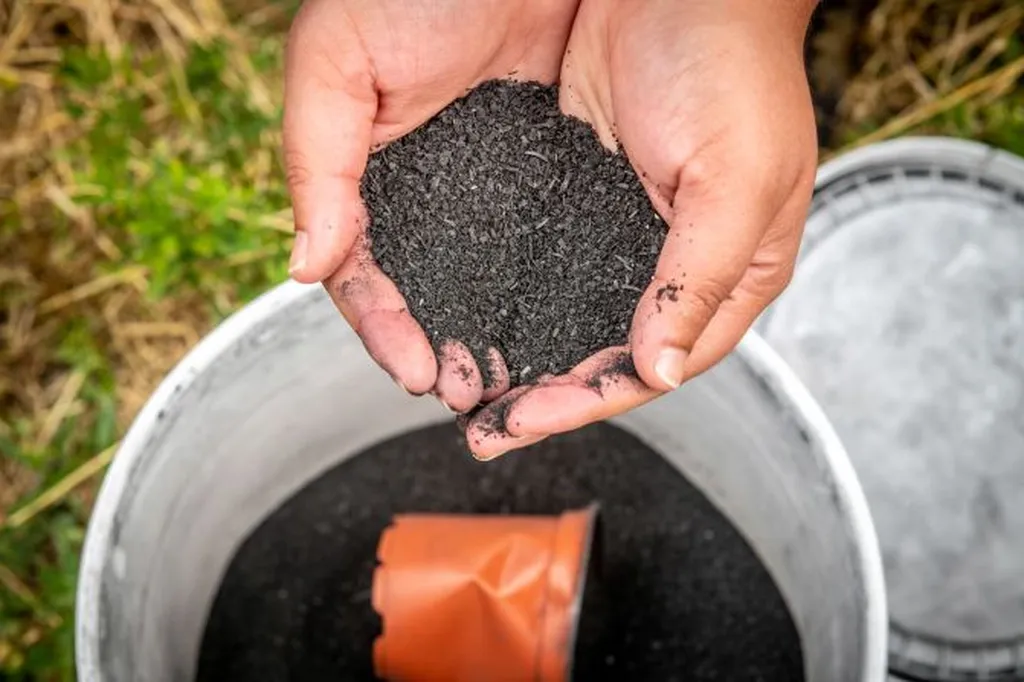In the quest for sustainable soil management, a promising solution has emerged from the ashes, quite literally. Biochar, a carbon-rich product derived from the thermochemical conversion of biomass in an oxygen-limited environment, is gaining traction as a multifunctional soil amendment. A comprehensive review published in the journal “Farming System” (translated from Russian as “Sistemas de Agricultura”) sheds light on the potential of biochar to revolutionize soil fertility, enhance plant growth, and bolster climate resilience. The research, led by Godspower Oke Omokaro from the Institute of Environmental Engineering at the Peoples Friendship University of Russia, offers a nuanced look at the benefits and challenges of integrating biochar into agricultural practices.
Biochar’s appeal lies in its ability to improve soil structure, increase pH buffering capacity, and enhance cation exchange capacity. These properties can lead to significant improvements in soil fertility and crop productivity. “Biochar acts like a sponge, holding onto nutrients and water, making them more available to plants,” explains Omokaro. This enhanced nutrient availability can translate into higher yields, a boon for farmers and the agricultural industry at large.
The review, which examined 168 peer-reviewed studies published between 2005 and 2025, also highlights biochar’s potential in climate change mitigation. By sequestering carbon in the soil, biochar can help reduce greenhouse gas emissions, a critical factor in the fight against climate change. “The carbon sequestration potential of biochar is substantial,” notes Omokaro. “It offers a win-win solution for both agriculture and the environment.”
However, the use of biochar is not without its challenges. The review identifies risks such as nutrient immobilization and contaminant accumulation, which can negatively impact soil health and crop growth. Moreover, long-term application of biochar may alter soil biogeochemistry and microbial community structure, with unforeseen consequences.
One of the significant barriers to the widespread adoption of biochar is the high production cost. The lack of technical knowledge and limited policy support also hinder its integration into mainstream agricultural practices. To overcome these challenges, Omokaro advocates for quality control measures, integration into circular bioeconomy systems, and the development of carbon credit frameworks.
The commercial impacts of this research are profound, particularly for the energy sector. As the world shifts towards renewable energy sources, the demand for sustainable and efficient biomass conversion technologies is on the rise. Biochar production, a byproduct of biomass energy generation, presents an opportunity for energy companies to diversify their product portfolio and tap into the lucrative agricultural market.
Furthermore, the integration of biochar into soil management strategies can enhance the resilience of agricultural systems to climate change, ensuring food security and economic stability. As Omokaro puts it, “Biochar is not a silver bullet, but it is a powerful tool in our arsenal against climate change and food insecurity.”
In conclusion, the review by Omokaro and his team provides a comprehensive assessment of biochar’s potential and limitations within sustainable soil management strategies. As the world grapples with the challenges of climate change and food security, biochar offers a promising solution, one that could shape the future of agriculture and the energy sector. The journey towards widespread adoption may be fraught with challenges, but the potential rewards are immense. As the agricultural and energy sectors continue to evolve, biochar stands as a testament to the power of innovation and the promise of a sustainable future.

